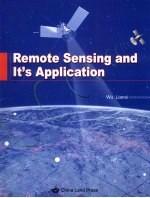
- 作 者:吴连喜著
- 出 版 社:北京:中国大地出版社
- 出版年份:2009
- ISBN:9787802462632
- 标注页数:158 页
- PDF页数:166 页
请阅读订购服务说明与试读!
订购服务说明
1、本站所有的书默认都是PDF格式,该格式图书只能阅读和打印,不能再次编辑。
2、除分上下册或者多册的情况下,一般PDF页数一定要大于标注页数才建议下单购买。【本资源166 ≥158页】
图书下载及付费说明
1、所有的电子图书为PDF格式,支持电脑、手机、平板等各类电子设备阅读;可以任意拷贝文件到不同的阅读设备里进行阅读。
2、电子图书在提交订单后一般半小时内处理完成,最晚48小时内处理完成。(非工作日购买会延迟)
3、所有的电子图书都是原书直接扫描方式制作而成。
1 Introduction 1
1.1 What is Remote Sensing 1
1.2 Electromagnetic Radiation 2
1.3 The Electromagnetic Spectrum 3
1.4 Interactions with the Atmosphere 5
1.5 Radiation-Target Interactions 7
1.6 Passive vs.Active Sensing 10
1.7 Characteristics of Images 10
2 Satellites and Sensors 14
2.1 On the Ground,In the Air,In Space 14
2.2 Satellite Characteristics:Orbits and Swaths 15
2.3 Spatial Resolution,Pixel Size,and Scale 17
2.4 Spectral Resolution 18
2.5 Radiometric Resolution 20
2.6 Temporal Resolution 20
2.7 Cameras and Aerial Photography 21
2.8 Multispectral Scanning 23
2.9 Thermal Imaging 25
2.10 Geometric Distortion in Imagery 26
2.11 Weather Satellites/Sensors 27
2.12 Land Observation Satellites/Sensors 30
2.13 Marine Observation Satellites/Sensors 36
2.14 Other Sensors 38
2.15 Data Reception,Transmission,and Processing 39
3 Microwave Remote Sensing 41
3.1 Microvaves Introduction 41
3.2 Radar Basics 43
3.3 Viewing Geometry and Spatial Resolution 44
3.4 Radar Image Distortions 47
3.5 Target Interaction and Image Appearance 49
3.6 Radar Image Properties 52
3.7 Advanced Radar Applications 55
3.8 Radar Polarimetry 57
3.9 Airborne versus Spaceborne Radars 60
3.10 Airborne and Spaceborne Radar Systems 61
4 Image Processing 64
4.1 Introduction 64
4.2 Digital Data 66
4.3 Elements of Visual Interpretation 68
4.4 Pre-Processing 69
4.5 Image Enhancement 72
4.5.1 Gray Scale Conversion 73
4.5.2 Histogram Conversion 74
4.5.3 Colour Display of Image Data 76
4.6 lmage Transform 78
4.6.1 Operations between Images 78
4.6.2 Principal Component Analysis 78
4.6.3 Tasseled Cap Transformation 79
4.7 Spatial Filtering 81
4.8 Texture Analysis 83
4.9 lmage Correlation 83
4.10 Image Fusion 85
4.10.1 Concept of Image Fusion 86
4.10.2 Objectives of Image Fusion 86
4.10.3 Image Fusion Techniques 89
4.10.4 Examples of Image Fusion 97
4.10.5 Advantages and limitations 99
4.11 Image Classification 103
4.11.1 Classification Techniques 103
4.11.2 Estimation of Population Statistics 105
4.11.3 Clustering 106
4.11.4 Parallelepiped Classifier 107
4.11.5 Decision Tree Classifier 108
4.11.6 Minimum Distance Classifier 109
4.11.7 Maximum Likelihood Classifier 111
4.11.8 Applications of Fuzzy Set Theory 112
4.11.9 Classification Using an Expert System 113
5 Applications 115
5.1 Agriculture 116
5.1.1 Crop Type Mapping 117
5.1.2 Crop Monitoring & Damage Assessment 119
5.1.3 Global Vegetation Map 121
5.2 Forestry 121
5.2.1 C1ear Cut Mapping & Deforestation 124
5.2.2 Species Identification & Typing 125
5.2.3 Burn Mapping 127
5.3 Hvdrology 128
5.3.1 Flood Delineation & Mapping 129
5.3.2 Soil Moisture 131
5.3.3 Water Quality Monitoring 132
5.4 Land Cover & Land Use 133
5.4.1 Land Cover Classification 135
5.4.2 Land Cover/Biomass Mapping 136
5.4.3 Land Cover Change Detection 137
5.5 Mapping 138
5.5.1 Planimetry 139
5.5.2 Height Measurement(DEM Generation) 140
5.5.3 Topographic & Baseline Thematic Mapping 141
5.5.4 Geological Interpretation 143
References 144
Appendix A Abbreviations and acronyms 149
Appendix B Colour Figure 151
